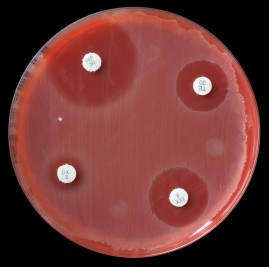 This month saw the publication of a UK Department of Health report on the growing problem of antimicrobial resistance, which included the shocking recommendation that antimicrobial resistance be added to the UK government list of threats to national security alongside terrorism and pandemic flu. In this report, Professor Dame Sally Davies, Chief Medical Officer for the UK, focused on the increasing problem of multidrug resistant organisms–raising the profile of an important issue that many scientists and health-care professionals have warned us about before. A March 12 Nature editorial welcomed the recommendations as a sign that policy makers in the UK are taking the threat of antimicrobial resistance seriously and are prepared to take more steps to address the problem of multidrug-resistant organisms.
This month saw the publication of a UK Department of Health report on the growing problem of antimicrobial resistance, which included the shocking recommendation that antimicrobial resistance be added to the UK government list of threats to national security alongside terrorism and pandemic flu. In this report, Professor Dame Sally Davies, Chief Medical Officer for the UK, focused on the increasing problem of multidrug resistant organisms–raising the profile of an important issue that many scientists and health-care professionals have warned us about before. A March 12 Nature editorial welcomed the recommendations as a sign that policy makers in the UK are taking the threat of antimicrobial resistance seriously and are prepared to take more steps to address the problem of multidrug-resistant organisms.
Measures that can be applied to control the spread of multidrug resistant organisms include more limitations on use of antibiotics, better surveillance of developing resistance, and reservation of certain antibiotics for use only in specific circumstances. The UK report highlights the need for more partnership between policy makers/public health agencies and pharmaceutical companies to support and encourage research into the development of new antibiotics, and also emphasizes the positive benefits of better hygiene and awareness to prevent the spread of infections in hospitals.
Several news articles that discussed the UK report commented on the lack of new antimicrobials in the pipeline, in part due to lack of profitability of these drugs and in part due to the fact that it is getting harder and harder to find new targets for antimicrobials in bacterial cells.
It is less than 80 years since the discovery of the first antibiotics. Before the 1940’s, it was common for people to die of infections that are easily curable today. The problem of antibiotic resistance, if it continues unchecked, threatens to send us back to those days. In recent years much attention has been focused on the emergence of “Superbugs” such as multidrug-resistant Pseudomonas aeruginosa, methicillin-resistant Staph aureus (MRSA), and carbapenem resistant enteric bacteria, which pose serious risks to compromised patients in hospital settings, in some circumstances leaving no good therapeutic options. The good news in the UK report is that preventive measures to halt the spread of MRSA through awareness and improved hygiene have reduced the incidence in the UK by up to 80% since 2003.
Amid all this depressing news I took encouragement from a couple of recent PLoS One papers that show how use of a novel combination of a traditional remedy for wound treatment (makuna honey) and antibiotics such as oxacillin (Jenkins and Cooper, 2012) and rifampicin (Müller et al, 2013) inhibited growth of MRSA isolates in vitro. Use of honey along with oxacillin appeared to reverse oxacillin resistance in the tested MRSA organism by downregulating expression of a beta lactamase. Use of rifampicin and honey combinations was also effective against a number of organisms in vitro, including Pseudomonas aeruginosa, and E. coli and MRSA isolates. Most encouragingly, Müller et al reported “….no resistant bacteria could be isolated after exposure of wound isolates (Escherichia coli, MRSA, Pseudomonas aeruginosa, and Staphylococcus epidermidis) to sub-inhibitory concentrations of manuka honey”. Honey is known to contain more than one compound with antibacterial properties, including methylglyoxal and hydrogen peroxide, but the component that enhanced antibacterial activity was not identified in these studies. It will be interesting to find out what future studies reveal about these compounds–and to see whether novel antimicrobials may arise from similar unexpected combination approaches.
Does anyone have similar papers to share on the search for new antimicrobials?
Here are the Honey Papers:
Müller, P., et al. (2013) Synergism between Medihoney and Rifampicin against Methicillin-Resistant Staphylococcus aureus (MRSA). PLoS ONE 8(2), e57679. doi:10.1371/journal.pone.0057679
Jenkins, R., and Cooper, R. (2012) Improving Antibiotic Activity against Wound Pathogens with Manuka Honey In Vitro. PLoS ONE 7(9) e45600. doi:10.1371/journal.pone.0045600
Isobel Maciver
Latest posts by Isobel Maciver (see all)
- 3D Cell Culture Models: Challenges for Cell-Based Assays - August 12, 2021
- Measuring Changing Metabolism in Cancer Cells - May 4, 2021
- A Quick Method for A Tailing PCR Products - July 8, 2019
